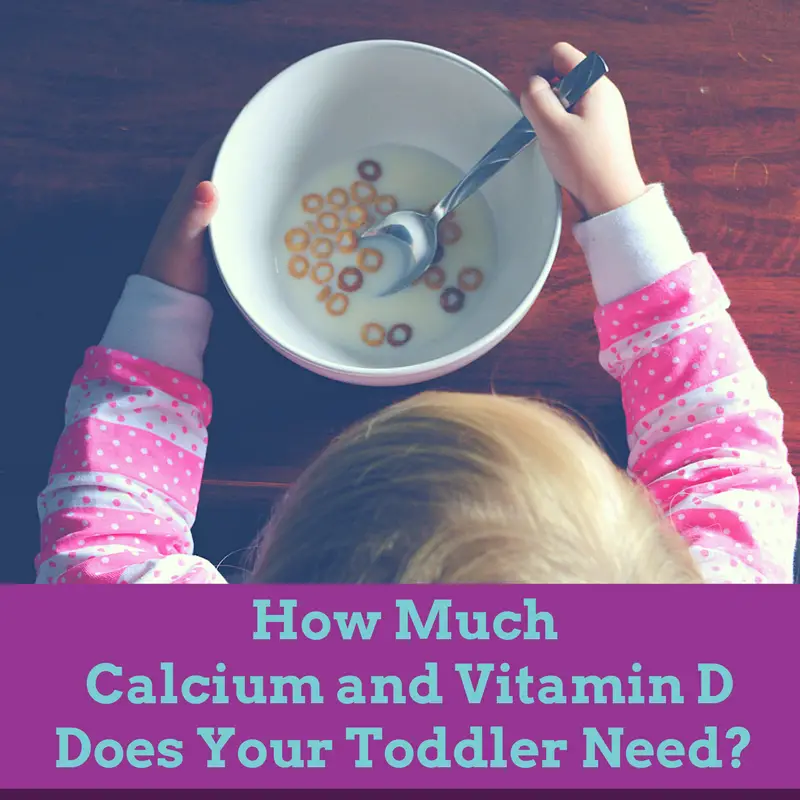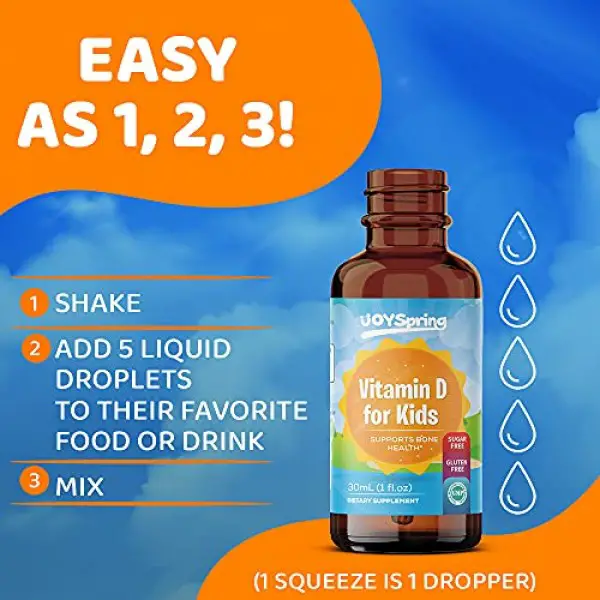How Is Vitamin D Deficiency Treated
Once you have spoken to your doctor about your concerns, they will run a blood test to confirm whether your child has the condition.
Children of different ages require different amounts of vitamin D per day and your doctor will be able to provide you with tailored advice and arrange follow-up appointments to check how things are going in the coming weeks and months.
High Doses Of Vitamin D Safe For Children
By Anne Harding, Reuters Health
3 Min Read
NEW YORK – Giving school children very high doses of vitamin D is safe, and may be necessary to bring their blood levels of the nutrient up to the amount necessary for optimum bone growth and health, a new study shows.
Insufficiency in vitamin D is common in children around the world, but there is little data on how much supplementation kids need, or even how much vitamin D they should have in their blood, Dr. Ghada E.-Hajj Fuleihan of the American University of Beirut in Lebanon told Reuters Health. In the pediatric literature, we dont have a lot to guide us, she said.
In a previous study, Fuleihan and colleagues found that giving 10- to 17-year-olds relatively high doses of vitamin D3 increased their bone mass and bone area, as well as lean mass. In the current study, they report on both the short- and long-term safety of high-dose supplementation.
The short-term study included 25 school children randomly assigned to receive a placebo or 14,000 international units of vitamin D3 per week for eight weeks. In the long-term study, 340 study participants took placebo, 1,400 IU weekly, or 14,000 IU a week, and were followed up at six and 12 months.
Currently, the Institute of Medicine recommends a daily vitamin D3 intake of 200 IU for children. The high dosage used in the current study was 2,000 IU daily, or 10 times that amount.
Childhood Obesity And Vitamin D
Vitamin D deficiency or insufficiency have been reported among a high percent of healthy obese and overweight children and adolescents worldwide . The study performed by Cizmecioglu et al., besides confirming that the mean level of 25-hydroxyvitamin D was deficient or insufficient in 65% of children, and significantly lower in girls than boys, also showed a significantly negative correlation between serum 25-hydroxyvitamin D levels and BMI in obese and overweight subjects . Furthermore it has also been demonstrated that a 1% increase in BMI percentile results in a 5% decrease in serum 25-hydroxyvitamin D level. This phenomenon is attributed to increased adipose tissue, which decreases vitamin D bioavailability via sequestration in body fat. For this reason, some authors suggest a vitamin D supplementation of 10002000 IU/day to prevent vitamin D deficiency in obese people .
Also Check: What Is Vitamin C Serum Good For Skin
What Are The New Dris For Vitamin D
The DRIs for vitamin D are based on maintaining skeletal health and have been set using the assumption that sun exposure is minimal.
The DRIs for vitamin D, which can also be found in the DRI tables, are as follows:
The DRIs for vitamin D| Age group |
|---|
| 4000 IU |
| Adequate Intake rather than Recommended Dietary Allowance. |
The IOM report states that there are no additional health benefits associated with vitamin D intakes above the level of the new RDA.
Total vitamin D intake should remain below the level of the new UL to avoid possible adverse effects. Long-term intakes above the UL increase the risk of adverse health effects.
Effects Of Vitamin D Deficiency

Vitamin D deficiency exposes your child to several health risks, such as
Sufficient sun exposure and a diet containing vitamin D-rich foods can avert these risks. Despite these, if you suspect your child isnt getting enough vitamin D, discuss supplement use with your pediatrician.
Recommended Reading: Is It Good To Take Vitamin C Everyday
Why Is Vitamin D Important For Babies
Vitamin D is crucial for the health of your babys bones and teeth. Severe vitamin D deficiency can lead to a brittle bone disease called rickets, says Dr. Liermann. Vitamin D helps the body absorb calcium and utilize it to form and strengthen bones. Without vitamin D, a child is more prone to fractures and growth problems.
The body also needs vitamin D for brain development and immune system health. Vitamin D is necessary for so many functions, and its hard to get enough without a supplement, says Dr. Liermann.
Vitamin D Supplementation For Children
If your child is vitamin D deficient, your doctor may prescribe them a vitamin D supplement. Vitamin D is present in multivitamins and standalone vitamin D dietary supplements available as tablets, capsules, syrups, powder, and gummies. These supplements contain vitamin D2 or D3, both of which have almost equivalent effects in raising the active vitamin D level in the body .
However, most pieces of clinical evidence show that vitamin D3 raises active vitamin D levels in serum to a greater extent. Additionally, it maintains high levels for an extended period compared to vitamin D2.
The types and quantities of supplements required for your child should be decided by a pediatrician. So, do not administer vitamin D supplements to your child without consultation. Doing so can increase your childs risk of vitamin D overdose, increasing their risk of developing kidney stones.
It is recommended that parents keep track of the childs total vitamin D intake from food and supplementation and keep it within the tolerable upper limits .
| Age |
|---|
Also Check: What Vitamins To Take For Eczema
Vitamin D3 Dose For Children
Vitamin D can be found in foods such as fatty fish, eggs and fortified milk and orange juice. Most of the vitamin D that people get is manufactured in the skin after exposure to the sun. Due to concerns about skin cancer, your child may not spend very much time in the sun. If his diet is not providing him with adequate levels of vitamin D, a vitamin D3 supplement may help raise his levels. Before giving your child any supplement or vitamin, talk to a pediatrician for advice.
Video of the Day
What Foods Provide Vitamin D
The major sources of vitamin D are fortified foods. In Canada, cow’s milk and margarine must be fortified with vitamin D. Goat’s milk, fortified plant based beverages , and some calcium-fortified orange juices are permitted to be fortified with vitamin D. Cheese and yogurt can be made with vitamin D-fortified milk, however, the final product does not contain as much vitamin D as fluid milk alone. The only natural sources of vitamin D in the Canadian food supply are fatty fish and egg yolks.
Because it is a commonly-consumed food, fluid milk is a major dietary source of vitamin D.
You May Like: What Veggies Have Vitamin C
Good Sources Of Vitamin D
From about late March/early April to the end of September, most people should be able to make all the vitamin D they need from sunlight.
The body creates vitamin D from direct sunlight on the skin when outdoors.
But between October and early March we do not make enough vitamin D from sunlight. Read more about vitamin D and sunlight.
Vitamin D is also found in a small number of foods.
- fortified foods such as some fat spreads and breakfast cereals
Another source of vitamin D is dietary supplements.
In the UK, cows’ milk is generally not a good source of vitamin D because it is not fortified, as it is in some other countries.
Overdose Of Vitamin D
Adverse effects of Vitamin D overdose are rare but care should be taken with multivitamin preparations as Vitamin A toxicity is a concern. Multivitamin preparations often contain a surprisingly low dose of Vitamin D.
Vitamin D toxicity is exceedingly rare below serum concentrations of 375nmol/L. Massive overdose causes hypercalcaemia but there is no agreement on the threshold concentration or amount of Vitamin D that results in toxicity. In adults, prolonged daily intake of Vitamin D up to 10,000 IU or serum concentrations of 25D of up to 240 nmol/L appear to be safe. SACN has accepted the European Food Safety Authority recommendations of a safe upper limit of 1,000 units/day for infants up to 1 year of age, 2,000 units/day for children aged 1-10 years and 4,000 units/day for those older than 10.
Also Check: Are Vitamin Infusions Good For You
What Happens If A Child Is Getting Too Much Vitamin D
Related Articles
Vitamin D is essential for children and their bone health. Consuming too much vitamin D, on the other hand, can be dangerous, as it can affect the way the body absorbs calcium. This can have serious consequences and lead to problems with the digestive tract and the kidneys if the overdose is not recognized and treated.
Vitamin D Supplements: What Parents Should Know

Getting enough vitamin D is essential so kids bones can grow strong and their immune systems can ward off illness.
Vitamin D gets into the body through absorption of sunlight and ingestion of food. From April through the end of October, spending just 15 to 30 minutes outside in the middle of the day with hands and face exposed will stimulate the skin to make all the vitamin D your child needs. In fact, on a sunny summer day, a child wearing a bathing suit can generate 10,000 to 20,000 international units of vitamin D after 15 to 30 minutes. In a neat biological trick, a persons body cant overdose on vitamin D created by the sun.
Foods such as salmon, sardines, tuna, cod liver oil, egg yolks and shiitake mushrooms contain a lot of vitamin D. Many kids dont seem to love these vitamin D superfoods, so luckily store-bought milk is often fortified with vitamin D, as are many cereals and even orange juice. Not all dairy products are fortified with vitamin D, however, so make sure to read the labels.
Recommended Reading: How To Check Vitamin Levels In Body
First Nations Inuit And Mtis Health Committee
Members: James Irvine MD Heather Onyett MD Kent Saylor MD Heide Schroter MD Michael Young MD Sam Wong MDConsultants: James Carson MD John C Godel MD Liaisons: Debbie Dedam-Montour, National Indian and Inuit Community Health Representatives Organization Elizabeth Ford, Inuit Tapiriit Kanatami Elaine Gagnon, Aboriginal Nurses Association of Canada Geoffrey Gurd, Health Canada, First Nations and Inuit Health Branch Carolyn Harrison, Health Canada, First Nations and Inuit Health Branch Kathy Langlois, Health Canada, First Nations and Inuit Health Branch Kelly Moore MD, American Academy of Pediatrics, Committee on Native American Child Health Melanie Morningstar, Assembly of First Nations Eduardo Vides MD, Métis National CouncilPrincipal Author: John C Godel, MD
Why Give Vitamin D To Children
Children can inherit vitamin D deficiency from the mother already in the fetal stage. The mothers vitamin D levels also affect the levels in breast milk after the baby is born. Since breast milk also contains relatively little vitamin D in healthy women, it is extra important that fully breastfed children receive a supplement from the beginning. In most of the states, both fully breastfed and bottle-fed children receive D-drops to protect against vitamin D deficiency during the winter.
Read Also: How Much Vitamin D Should A Person Have Daily
How Can We Evaluate The Toxic Serum Concentrations In Infants And Children
The mechanisms giving rise to vitamin D toxicity are still unclear. It has been emphasized how the level of 1,25 dihydroxyvitamin D can be within the normal range also in the presence of high levels of 25-hydroxyvitamin D and hypercalcaemia: the explanation advanced is that a high concentration of 25-hydroxyvitamin D and other vitamin D metabolites displaces the free 1,25-hydroxyvitamin D from the vitamin D binding protein, allowing an intracellular action on gene transcription and the priming of its biochemical effects .
Vitamin D For Kids: Right Dosage Sources And Supplements
Vitamin D , also known as the sunshine vitamin, is a fat-soluble vitamin that plays a significant role in the growth, development, and sustenance of individuals across ages. Its importance for children and adolescence requires special mention, primarily due to its role in bone mineralization .
Experts recommend children and teens between the ages of three and 18 years get 600 IU of vitamin D per day . One can fulfill this requirement by eating a well-balanced diet containing animal-origin foods and getting sufficient sunlight exposure.
Still, several children and adolescents experience vitamin D insufficiency or deficiency, exposing them to long-term health risks. So, what can parents do to ensure their children and teens get sufficient vitamin D?
Read on to learn more about the functions of vitamin D, its sources, supplementation, and dietary management. But before we begin, lets briefly understand what vitamin D is.
Don’t Miss: What Vitamins Increase Immune System
Recommended Daily Vitamin D Levels At A Glance
We all need different levels of Vitamin D, which vary depending on how old we are.
- Breastfeeding babies up to the age of 1 should have a daily supplement of 8.5 to 10 micrograms 10
- Babies that being fed infant formula should not be given a vitamin D supplement if they are having more than 500ml of infant formula a day. Infant formula is fortified with Vitamin D and other nutrients11
- Children aged from 1-4 should be given a daily supplement that contains 10µg of Vitamin D1212
The advice in this article is for information only and should not replace medical care. Please check with your GP or healthcare professional before trying any supplements, treatments or remedies. Food supplements must not be used as a substitute for a varied and balanced diet and a healthy lifestyle.
: 27 July 2021
Did The Iom Report Make Recommendations With Respect To Serum Vitamin D Levels
Serum concentration of 25-hydroxy-vitamin-D D) is the best indicator of vitamin D status. It reflects total vitamin D input – from food, supplements, and sun exposure.
There is considerable discussion surrounding the serum concentrations of 25D associated with optimal health, and cut points have not been developed by a scientific consensus process.
However, the IOM expert committee stated that its review of the data suggests that, relative to bone health:
- People are at risk of vitamin D deficiency at serum 25D concentrations < 30 nmol/L. Some are potentially at risk for inadequacy at levels ranging from 3050 nmol/L.
- Practically all people are sufficient at levels 50 nmol/L
- There may be reason for concern at serum concentrations > 125 nmol/L
The IOM expert committee encouraged the development of evidence-based cut points for serum vitamin D measures relative to deficiency as well as excess.
Recommended Reading: What Is Vitamin C Serum Used For
Vitamin D And Calcium: Updated Dietary Reference Intakes
The U.S. Institute of Medicine released its report on the review of the Dietary Reference Intakes for vitamin D and calcium on November 30, 2010. The review was jointly commissioned and funded by the U.S. and Canadian governments.
The decision to commission the IOM review reflects the government’s goal of ensuring that Canadians benefit from the most up to date health and nutritional advice.
The IOM report states that there is no additional health benefit associated with vitamin D or calcium intakes above the level of the new Recommended Dietary Allowance . Health Canada reminds Canadians that total nutrient intake should remain below the level of the new Tolerable Upper Intake Level to avoid possible adverse effects.
Sun Exposure And Vitamin D

Vitamin D is a relevant factor influencing the achievement of peak bone mass, which in turn reduces the risk of osteoporosis and fractures in childhood and adulthood. Because the insufficient oral intake, sensible sunlight exposure can provide an adequate amount of vitamin D, which is stored in body fat and released during the winter months when vitamin D cannot be produced. Exposure to a minimal erythemal dose while wearing only a bathing suit is equivalent to ingestion of approximately 20000 IU of vitamin D. Therefore, in order to maintain an adequate 25-hydroxyvitamin D status, exposure of the arms and legs for 530 minutes between 10.00 am and 3.00 pm twice a week is often sufficient .
Read Also: Does Yogurt Have Vitamin D
What Is The Vitamin D Status Of Canadians
Vitamin D status can be measured in two ways – vitamin D dietary intakes, and vitamin D blood levels. It is the blood level data that gives a true picture of the vitamin D status in the body. Vitamin D is unique in that there is another source besides diet and supplements, namely, sunlight. So even if dietary intakes do not appear to be adequate, overall vitamin D status may be much different.
Dietary intake data were collected in the 2004 Canadian Community Health Survey . At a national level, there seems to be a very high prevalence of inadequate vitamin D intakes from food sources
Data on vitamin D intakes from food and supplement sources combined show a lower prevalence of inadequate vitamin D intakes, although still above 50% .
However, estimates of inadequate intakes of vitamin D must be interpreted with caution because the reference values to assess adequacy assume no vitamin D is contributed to the body by sun exposure. For this reason, data on vitamin D intakes from food and supplement sources cannot stand alone and consideration must be given to serum 25-hydroxy-vitamin-D D) levels, a well-established biomarker for vitamin D status.
Health Canada continues to recommend that people over the age of 50 years take a daily vitamin D supplement of 400 International Units .